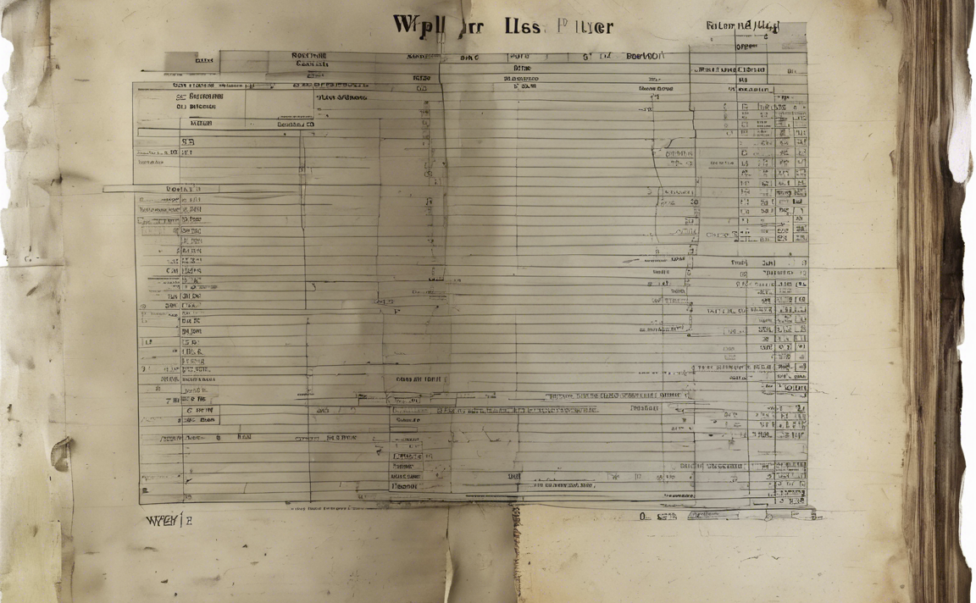Everything You Need to Know About WPL Score
Introduction
In the world of professional soccer, fans and analysts often look beyond the final scoreline to understand the performance of a team or player. One such metric that has gained prominence in recent years is the WPL score. This metric provides a comprehensive evaluation of a team’s performance in a match, taking into account various factors beyond just goals scored. In this article, we will dive deep into what the WPL score is, how it is calculated, and why it is important in analyzing soccer matches.
What is the WPL score?
The WPL score, short for “Winning Performance Level”, is a metric that assesses a team’s overall performance in a soccer match. Unlike traditional metrics that focus solely on goals scored and possession percentage, the WPL score takes into account a wide range of performance indicators to provide a more holistic view of a team’s display on the field. These indicators include shots on target, successful passes, tackles won, aerial duels won, and more.
How is the WPL score calculated?
Calculating the WPL score involves assigning weights to each performance indicator based on its impact on the outcome of a match. For example, a goal scored or a successful tackle in a crucial area of the field may carry more weight than a routine pass completion. These weights are then used to calculate a team’s overall performance level for a particular match, giving a numerical value that reflects how well the team performed relative to its opponents.
Why is the WPL score important?
The WPL score provides a more nuanced and detailed assessment of a team’s performance than traditional metrics like goals scored or possession percentage. By considering a wide range of performance indicators, the WPL score offers insights into aspects of the game that may not be captured by other metrics. Coaches, analysts, and fans can use the WPL score to identify strengths and weaknesses in a team’s performance, pinpoint areas for improvement, and compare performances across different matches.
Key components of the WPL score
- Shots on target: The number of shots taken by a team that are on target and pose a threat to the opposition goal.
- Successful passes: The percentage of passes completed successfully by a team, indicating their ability to maintain possession and create scoring opportunities.
- Tackles won: The number of successful tackles made by a team, showing their defensive solidity and ability to regain possession.
- Aerial duels won: The percentage of aerial duels won by a team, highlighting their dominance in the air and ability to win key battles.
- Key passes: The number of passes that lead to a goal-scoring opportunity, showcasing a team’s creativity and ability to break down defenses.
Benefits of using the WPL score
- Comprehensive analysis: The WPL score offers a comprehensive analysis of a team’s performance, taking into account multiple key indicators.
- Objective evaluation: By using objective performance indicators, the WPL score provides an unbiased evaluation of a team’s display on the field.
- Identifying strengths and weaknesses: Teams can use the WPL score to identify their strengths and weaknesses, allowing them to focus on areas that need improvement.
- Comparative analysis: The WPL score enables analysts to compare performances across different matches and against various opponents, providing valuable insights for tactical adjustments.
Frequently Asked Questions (FAQs)
- How does the WPL score differ from traditional metrics like goals scored?
-
The WPL score considers a wider range of performance indicators beyond just goals, providing a more detailed evaluation of a team’s performance.
-
Can individual players have their WPL scores calculated?
-
While the WPL score is typically used to assess team performance, individual player performances can also be evaluated using similar metrics.
-
Is the WPL score used in professional soccer leagues?
-
While the WPL score may not be used as an official metric in professional leagues, it is increasingly being adopted by analysts and coaches to gain deeper insights into team performances.
-
How can teams use the WPL score to improve their performance?
-
Teams can use the WPL score to identify areas for improvement, focus on key performance indicators, and make tactical adjustments based on their strengths and weaknesses.
-
Does the WPL score take into account the quality of opposition faced?
- The WPL score can be adjusted to account for the quality of opposition faced, allowing for a more contextually relevant evaluation of a team’s performance.
In conclusion, the WPL score is a valuable metric that provides in-depth insights into a team’s performance on the soccer field. By considering a range of performance indicators and calculating a numerical score, the WPL score offers a more comprehensive and objective evaluation of team displays. Coaches, analysts, and fans can leverage the WPL score to analyze matches, identify areas for improvement, and make informed decisions to enhance team performance.

